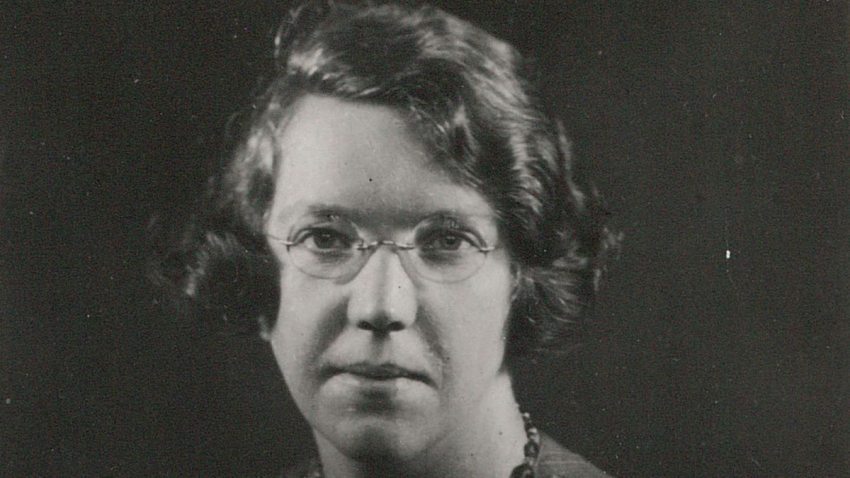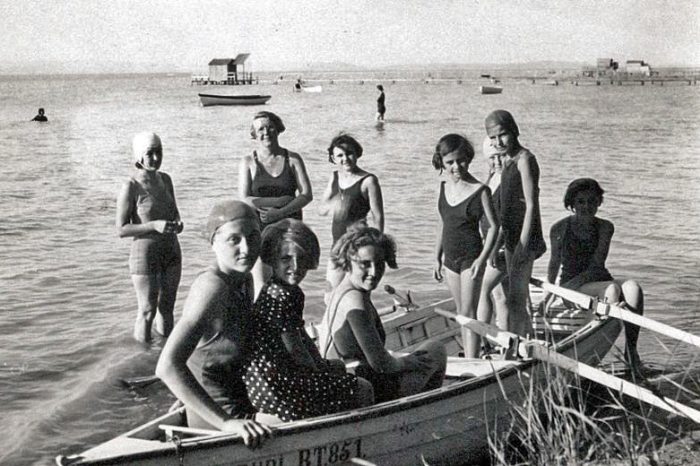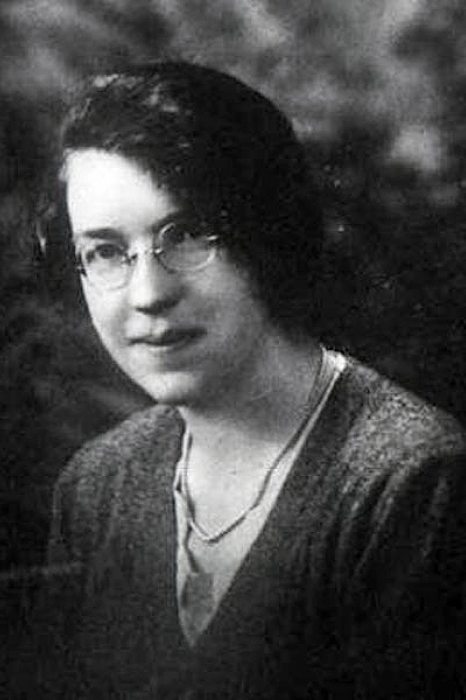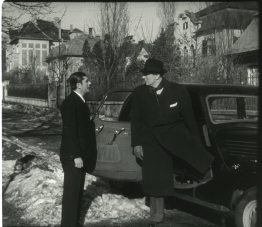The story of a Scottish missionary who was taken to Auschwitz from Budapest
As one of the leaders of the Scottish Mission School in Budapest, Jane Haining did her best to keep the school an island of peace for students of Jewish descent while the war raged beyond its walls.

In 2010, two books were found in the old safe of the Scottish Mission's church on Vörösmarty Street: one was a wildflower album in English and the other a Bible. The books were inscribed with the same name: Jane Haining. That is all that remained of the great Scottish lady in Budapest, who knew how to be brave at a time when most people were only interested in saving their own skins.
Jane Haining was born on 6 June 1897 in a Scottish village called Dunscore. Little Jane was only five years old when she lost her mother. In Lynley Smith's book about Haining, 'From Matron to Martyr', we learn that Jane's father was a farmer, but it was important for him to educate his three daughters, to whom he read from the Bible every night. The family attended the local Presbyterian church - Jane kept her faith until the end of her life.
After leaving school, she became a clerk in a thread manufacturing company and worked there for more than ten years.
She was very impressed by the fact that one of her cousins was a missionary in India; she herself started volunteering with several organisations.
Among other things, she became a member of an anti-alcoholic movement and taught in her church's Sunday school. Her faith was important to her and she had a desire to help people.
The Scottish Mission School
In 1931 after a lecture Jane Haining joined the Scottish Jewish Mission. She left her clerical job and moved to Budapest in 1932, where she became the supervisor of the boarding section of the Scottish Mission School. The school admitted disadvantaged students with excellent academic results. Most of the children came from secularised Jewish families and a significant number were orphans or half-orphans. Although the mission had an undisguised aim of conversion, Haining did not support the 'forced' conversion of the girls, and the school took the view that the girls should first and foremost learn about their own religion. The girls loved Jane, who showed them great empathy and affection - and became the official guardian of several of them.
In 2014, an article on Haining's life was published in the Múlt-kor magazine, in which András Szécsényi quotes one of Jane's students as saying of her, "You always felt that she loved you the most." The Scottish country girl also started to learn Hungarian so that she could communicate with the little girls in their own language. Every summer she spent two months with the school near Lake Balaton.
Jane Haining and her companions introduced the Jewish girls to a Christianity that accepted them and saw them as equals.
A quiet six years followed, during which hundreds of students attended the school - but in 1938 everything changed.
After the Anschluss, Hungary became a direct neighbour of the Third Reich. It was then that the first refugees arrived at the Scottish Mission School. Many of the Austrian Jewish families tried to flee through Hungary, and some were stuck for a time in Budapest, where many of their daughters found a temporary home at the Mission School.
In the summer of 1939 Haining went home to Scotland, accompanied by a teacher of the school, Margit Prém. Decades later the BBC interviewed two of Jane's nieces, who told how the relatives did everything they could to persuade Jane not to return to Budapest. But she was adamant and said the girls needed her.
The war
After the outbreak of war, the Jewish Mission Committee ordered her home twice, but Jane Haining decided to stay. The vast majority of the school's British faculty returned home and were replaced by Hungarian educators. Because of the school's welcoming attitude, there was a huge over-enrolment and the number of Jewish students steadily increased. According to Smith, the school also gave money to help parents who had been made unemployed by Jewish law. Haining gave lectures on British culture to families hoping to escape to England.
In Smith's book, he quotes a former student of the school, Zsuzsanna Spiegel, who recalled this period: 'As long as it was possible, right up to 19 March 1944, the day of the German occupation, they kept everything outside these walls, all the horrors. We were children, all equal (Jews and Christians), and nothing mattered but knowledge."
During the war years, Jane Haining, in addition to helping the girls, regularly visited British prisoners of war held on Hungarian soil.
Szécsényi's article describes that on 19 March 1944, after the Germans had invaded Hungary, the Sztójay government shortened the school year, so that everyone would have to be sent home by 31 March. The Scottish (as the girls called the school), however, did not send the Jewish students away, but allowed them to stay at the boarding school. The school authorities entrusted Haining with the task of informing the girls of the order to sew a yellow star on their coats (one of the accusations later made against her by the Gestapo was that she had wept at the order.)
On the fourth of April, the Gestapo appeared in Vörösmarty Street to arrest Jane. It later emerged that she had been reported by an Arrow Cross relative of the school cook after Haining had a disagreement with him. Several eyewitnesses recalled in different ways what happened when she was taken away, but all of them described Jane saying goodbye as she was led out: "Children, don't cry, I'll be home for lunch."
Jane’s last message
In his biography, Smith describes how Haining, then 47, was taken first to the Majestic Hotel and then to Belvedere, where she was interrogated by the Gestapo. At the end of April, she was transferred to Fő Street Prison. She was charged with eight counts, including hiding Jewish girls, visiting British prisoners of war and illegally listening to BBC broadcasts. The only charge she denied was that she was "actively taking part in politics." Jane had a Swiss passport in vain, because she was taken by the Nazis to an internment camp in Kistarcsa and put on a train to Auschwitz on 15 May.
In 2019, the Scottish Review of Books published a detailed article on the missionary's last weeks. In Auschwitz, Jane Haining was classified as a political prisoner, her clothes were taken away, her hair was shaved of and she was tattooed with the number 79467 on her arm. For reasons unknown, the Germans allowed Haining to write a letter to Budapest. On 15 July 1944, in a letter from Auschwitz to Margaret Prém, she wrote that she missed her children and asked the British Red Cross to send her food parcels. The letter contains a difficult-to-read line, which, according to an article published in Múlt-kor, was later interpreted by many to mean that Haining had an inkling of what was in store for her: "Here, on the way to heaven, are mountains, but not as beautiful and high as ours." Two days later, Jane Haining died, and the camp authorities officially issued a death certificate for her, stating that she had died of "natural causes" in the Auschwitz-Birkenau hospital. However, according to some historians, Jane did not meet her end in hospital.
The researchers were able to identify her from the number she received in the camp, and according to the surviving documents, she was transferred to Auschwitz-Birkenau on 17 July, where she was sent to the gas chambers.
Smith describes how, following the death notification, the British Foreign Office promised an investigation into the case and that "if mistreatment caused the death, those responsible will be brought to justice." This was an absurd statement, since the British leadership knew what was happening in Auschwitz at the time.
Jane Haining was not forgotten by the former residents of the Scottish school after the war. In 1984, with the support of the Jewish community in Budapest, a memorial plaque was placed in her honour in Vörösmarty Street. In 1997, Israel's Yad Vashem Museum honoured the brave woman who risked her life to protect her students with the Righteous Among the Nations Medal.
References:
https://www.scottishreviewofbooks.org/free-content/jane-hainings-letter-from-auschwitz/
https://mult-kor.hu/20140522_az_embermento_jane_haining









